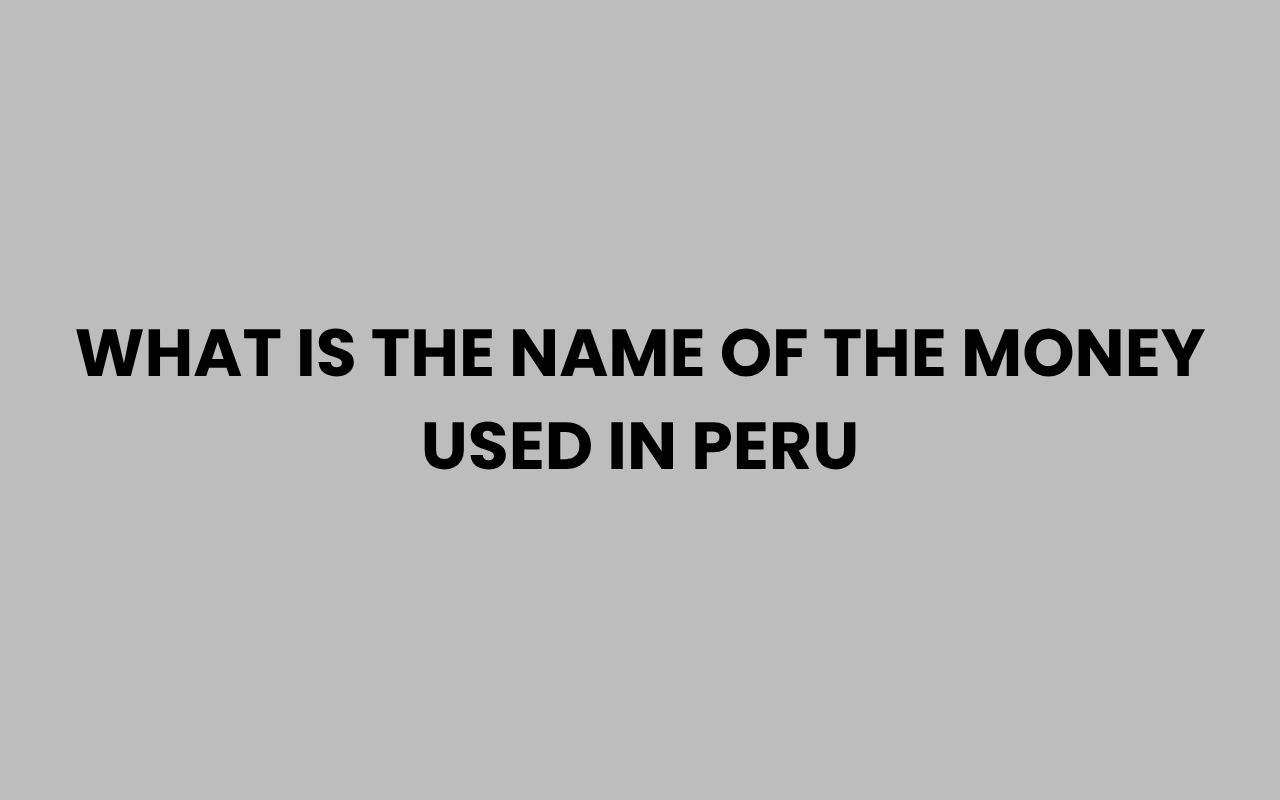Understanding the currency of a country is essential for anyone interested in its economy, travel, or international trade. Peru, a vibrant country in South America known for its rich culture and history, uses a unique form of money that plays a crucial role in its financial system.
This article explores the name, history, denominations, and characteristics of the money used in Peru, providing an in-depth look at its significance.
Introduction to Peru’s Currency
The official currency used in Peru is called the Peruvian Sol. In Spanish, it is known as Soles Peruanos (singular: Sol Peruano).
The symbol for the Peruvian Sol is S/, and its ISO currency code is PEN. This currency is the backbone of Peru’s economy and is used in all daily transactions within the country.
The Peruvian Sol replaced the previous currency, the Peruvian Inti, in 1991 due to high inflation. Since its introduction, the Sol has become a stable and trusted currency in South America.
“The Peruvian Sol is more than just money; it represents the nation’s resilience and economic progress over recent decades.”
Historical Background of the Peruvian Sol
The history of money in Peru is rich and complex. The original Sol currency dates back to the 19th century, first introduced in 1863.
Over time, Peru went through multiple monetary reforms, reflecting its economic challenges and growth.
During the late 20th century, Peru experienced hyperinflation, which severely affected the value of its currency. To combat this, the government introduced a new currency called the Peruvian Inti in 1985.
However, inflation persisted, and eventually, the Inti was replaced by the modern Peruvian Sol in 1991.
| Currency | Period of Use | Reason for Replacement |
|---|---|---|
| Original Sol | 1863 – 1985 | High inflation and economic instability |
| Peruvian Inti | 1985 – 1991 | Hyperinflation and need for monetary reform |
| Modern Peruvian Sol (PEN) | 1991 – Present | Economic stabilization and inflation control |
Denominations of the Peruvian Sol
The Peruvian Sol is subdivided into 100 smaller units called centimos. Both coins and banknotes are used in Peru, with various denominations designed to facilitate transactions of different sizes.
Coins
Coins in Peru are issued in denominations of 1, 5, 10, 20, and 50 centimos, as well as 1, 2, and 5 Soles. The coins feature important Peruvian symbols, historical figures, and native wildlife, reflecting the country’s cultural heritage.
- 1 centimo – Smallest denomination, rarely used due to low value
- 5, 10, 20, 50 centimos – Commonly used for small transactions
- 1, 2, 5 Soles – Used frequently in daily commerce
Banknotes
Banknotes are issued in denominations of 10, 20, 50, 100, and 200 Soles. Each banknote features prominent national heroes, landmarks, and cultural motifs.
| Denomination | Main Features | Color |
|---|---|---|
| 10 Soles | Portrait of Ramón Castilla (Peruvian president and military hero) | Red |
| 20 Soles | Portrait of Raúl Porras Barrenechea (historian and diplomat) | Orange |
| 50 Soles | Portrait of Abraham Valdelomar (writer and journalist) | Green |
| 100 Soles | Portrait of Jorge Basadre (historian) | Blue |
| 200 Soles | Portrait of María Parado de Bellido (patriot) | Purple |
Security Features of the Peruvian Sol
Modern Peruvian banknotes incorporate advanced security measures to prevent counterfeiting. These features include watermarks, security threads, microprinting, and color-shifting inks.
For example, the 100 Soles note includes a metallic security thread visible under UV light and a watermark portrait of Jorge Basadre. These elements ensure that the currency remains secure and trustworthy for users.
Economic Role and Stability
The Peruvian Sol is recognized as one of the more stable currencies in Latin America. Since its introduction in 1991, the Sol has maintained relative value, contributing to Peru’s economic growth and stability.
Peru’s economic policies, prudent fiscal management, and growing exports such as minerals, agriculture, and tourism have supported this stability. The Sol plays a crucial role in facilitating trade, investment, and everyday financial transactions within the country.
“The Peruvian Sol embodies the economic resilience of a nation that has overcome inflationary challenges and continues to grow.”
Exchange Rate and International Use
The Peruvian Sol is freely convertible and traded on international currency markets. Its exchange rate against major currencies like the US Dollar (USD), Euro (EUR), and others fluctuates based on global economic factors and Peru’s own economic performance.
Travelers to Peru are advised to exchange currency at official banks or authorized exchange bureaus to obtain the best rates and avoid counterfeit notes. Credit cards and electronic payments are increasingly accepted in urban areas, but cash remains essential in rural regions.
How to Identify Genuine Peruvian Currency
When handling Peruvian currency, especially as a visitor, it is important to verify authenticity. Here are some tips:
- Check for the watermark by holding the note up to the light.
- Look for a security thread embedded in the paper.
- Feel the texture of the banknote; genuine notes have raised printing.
- Verify holographic elements and color-shifting inks.
Conclusion
The name of the money used in Peru is the Peruvian Sol (S/), a currency with a rich history, diverse denominations, and modern security features. It reflects the country’s cultural identity and economic progress.
For anyone visiting, investing, or studying Peru, understanding the Peruvian Sol is invaluable.
Whether paying for a meal in Lima or conducting business in Cusco, the Peruvian Sol remains the symbol of Peru’s vibrant economic life and cultural heritage.

